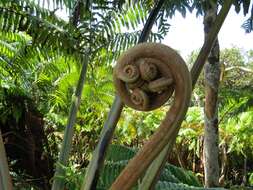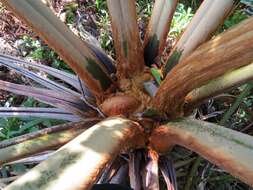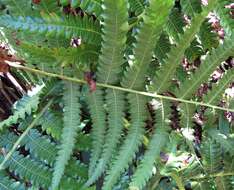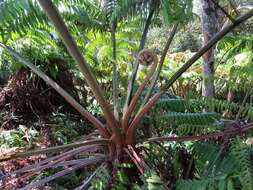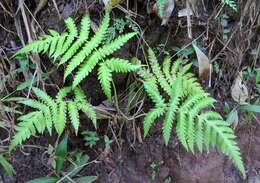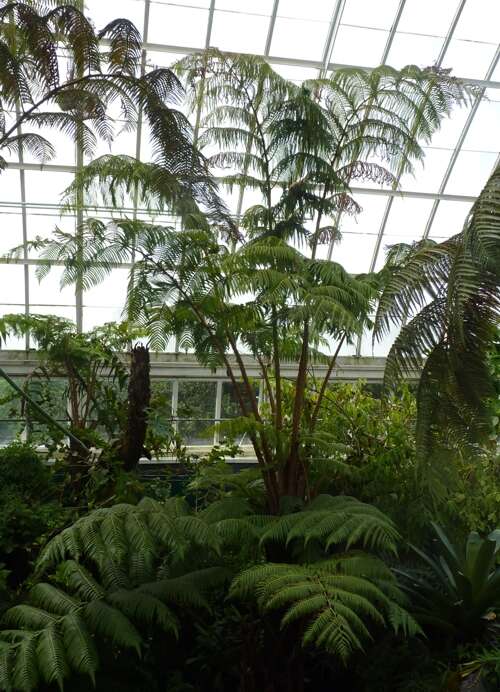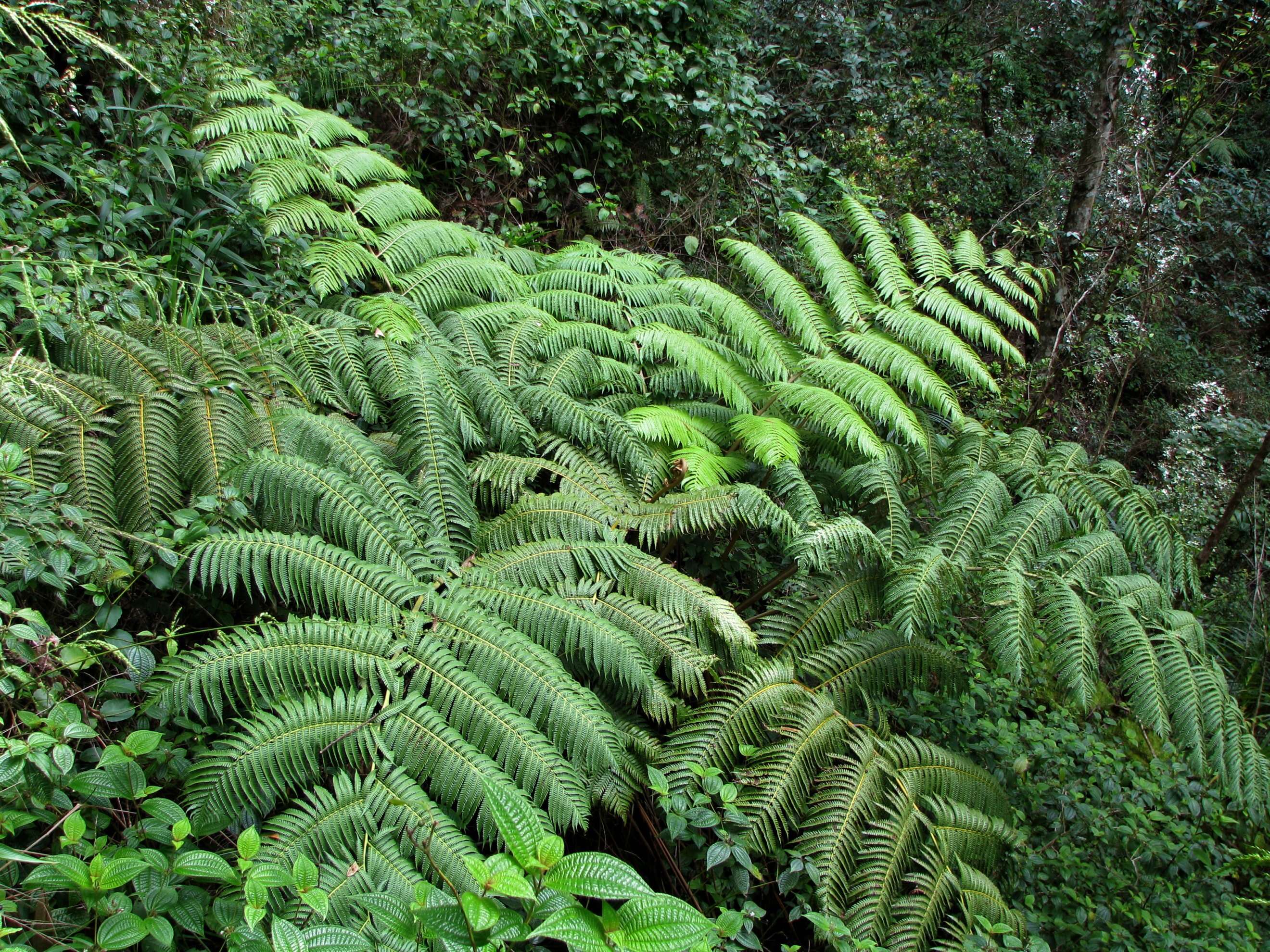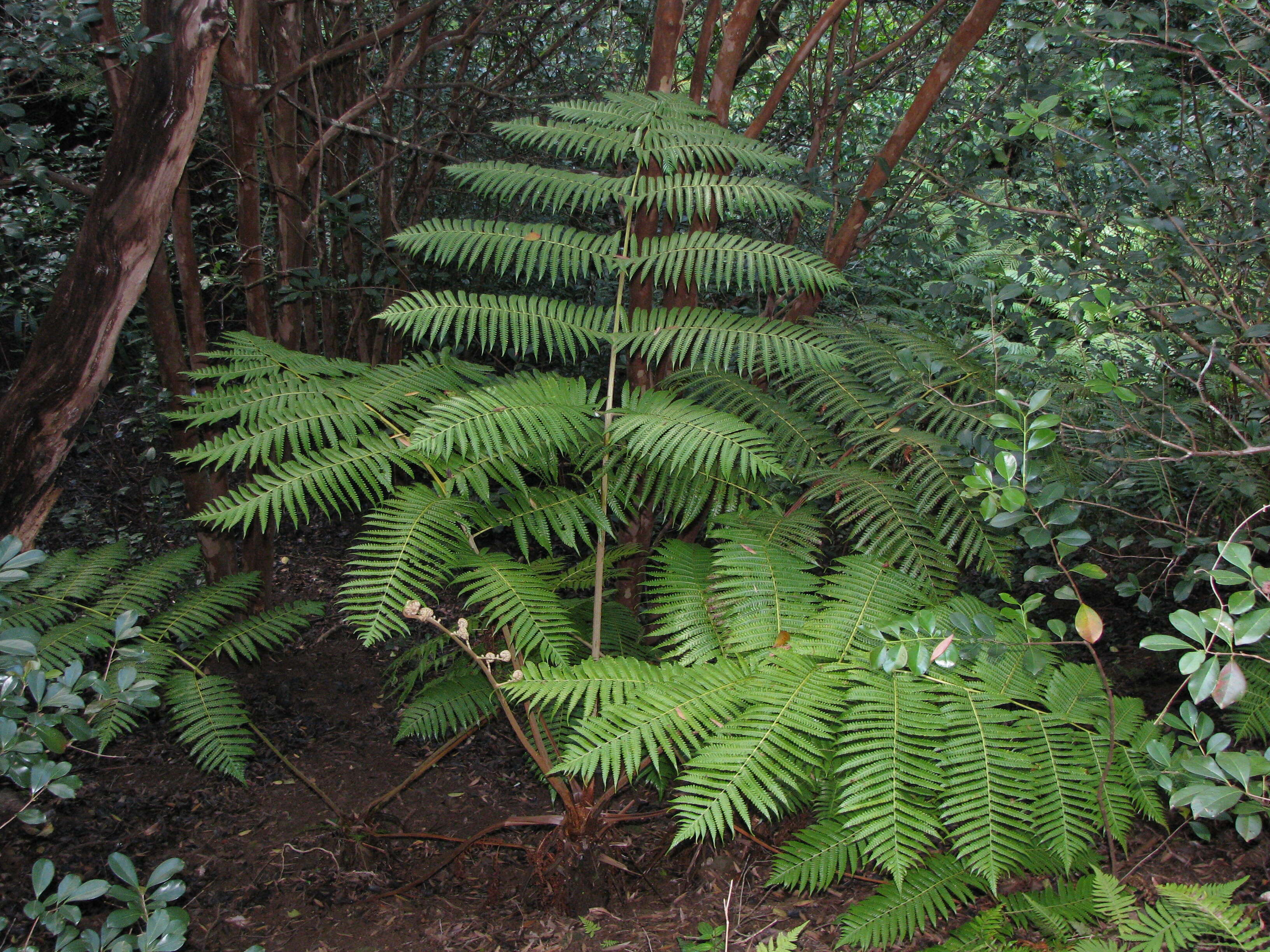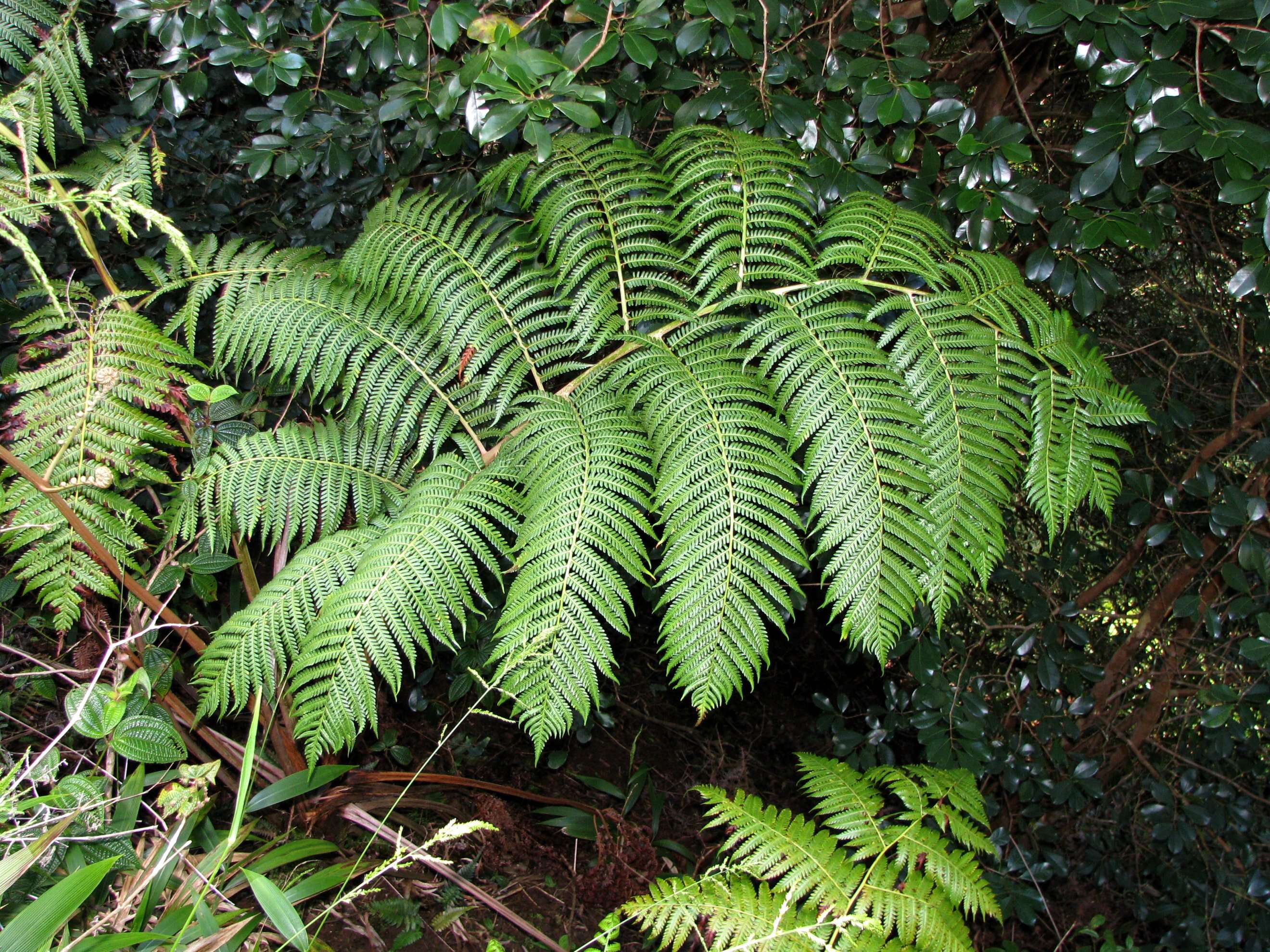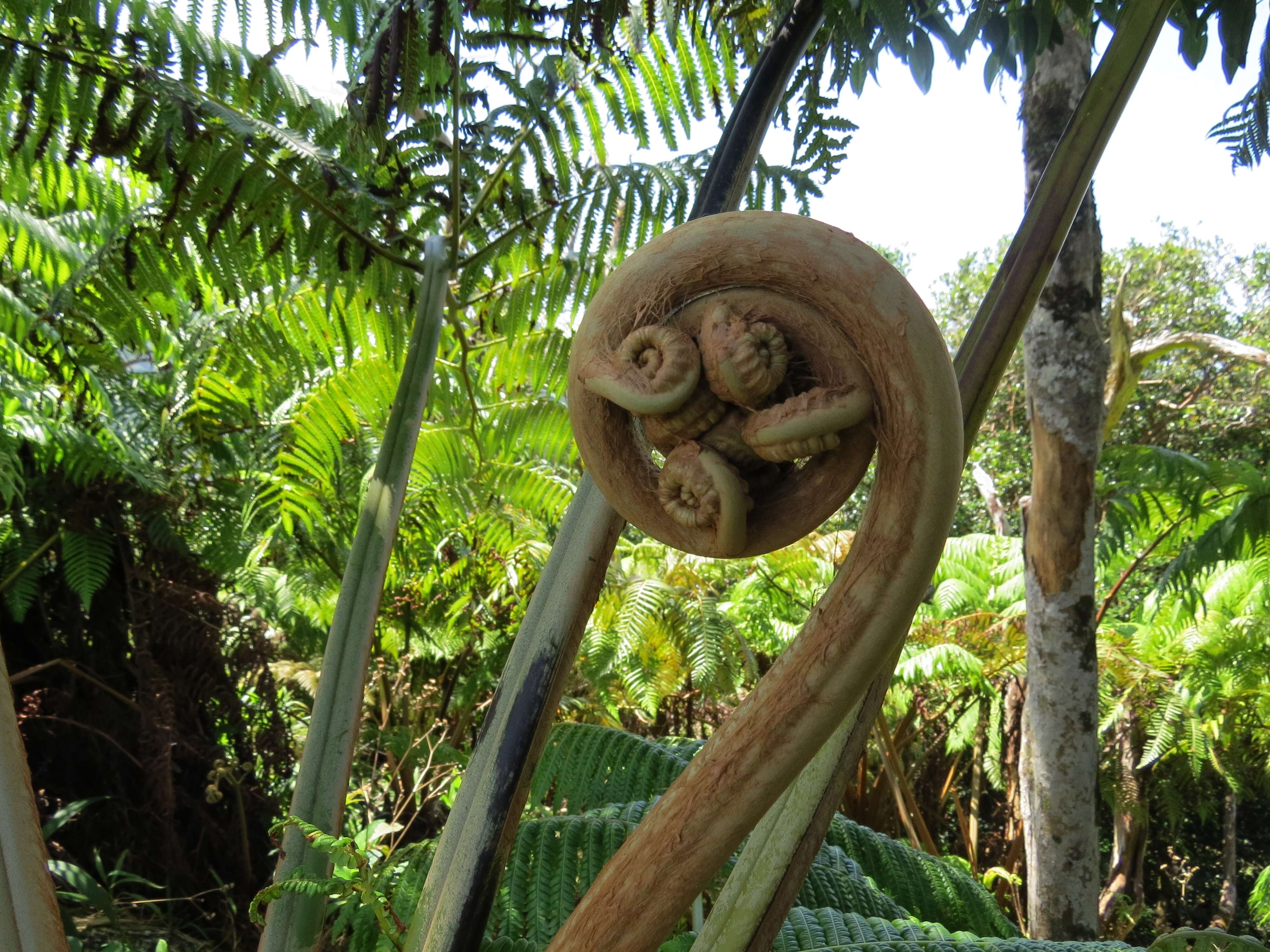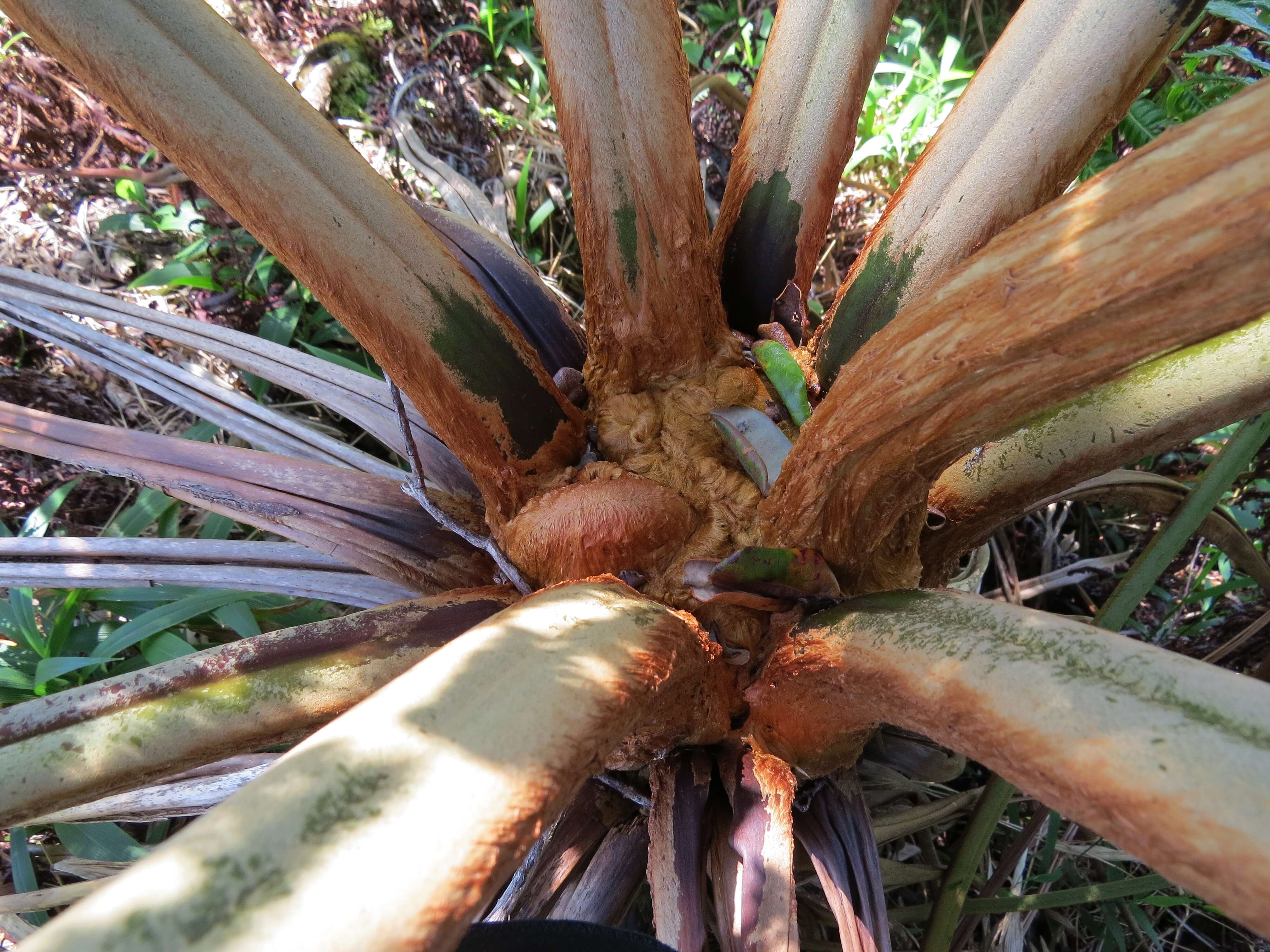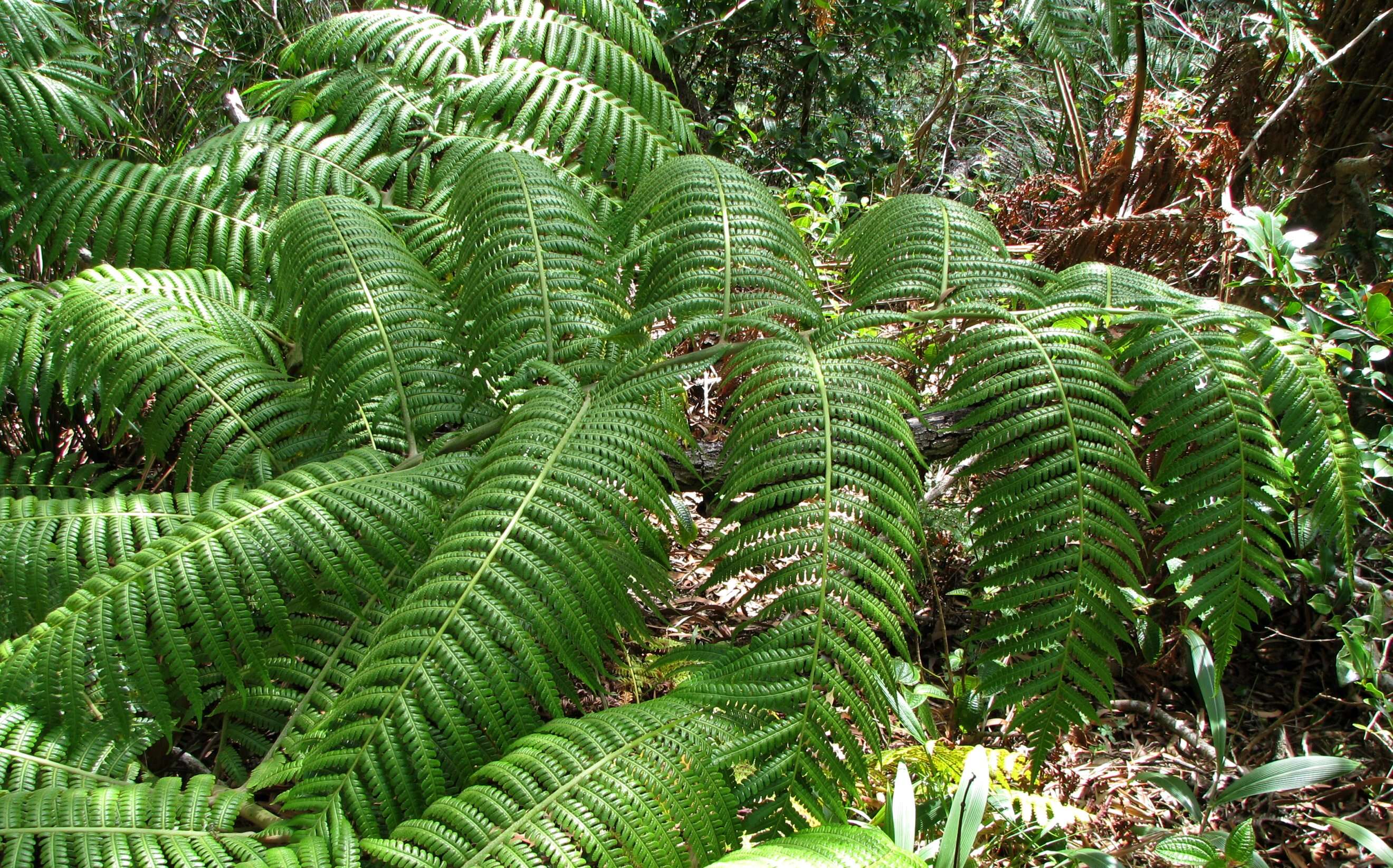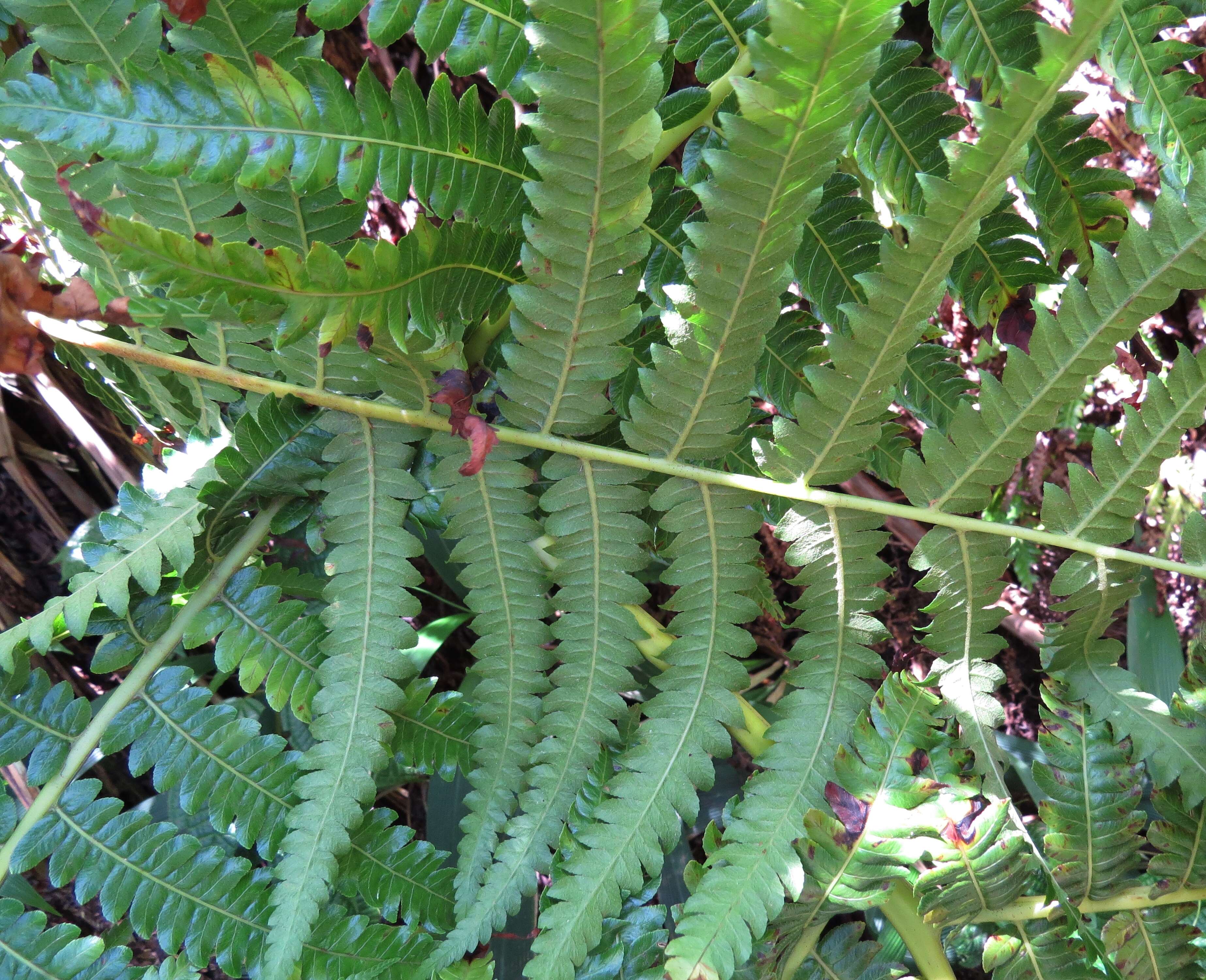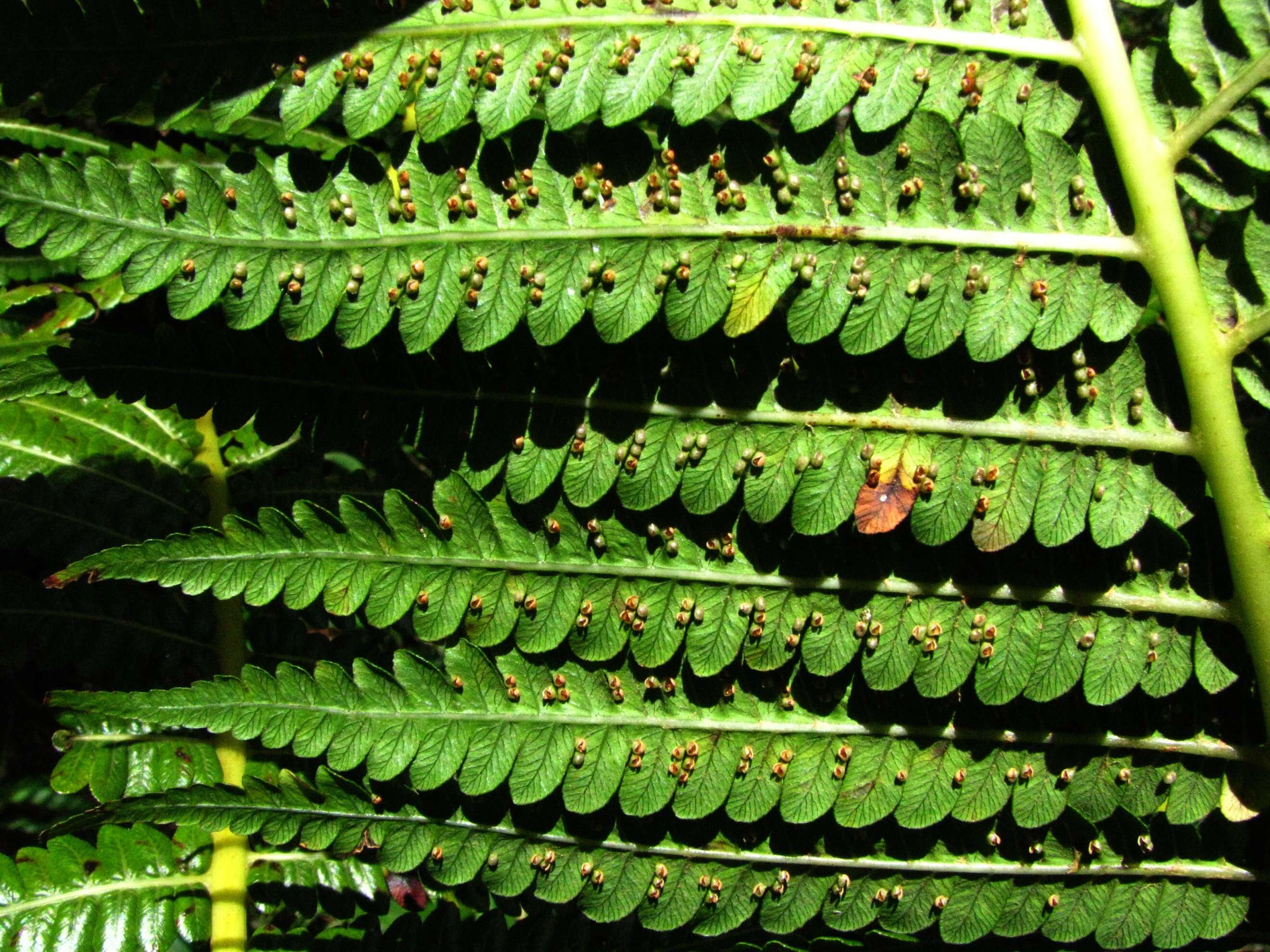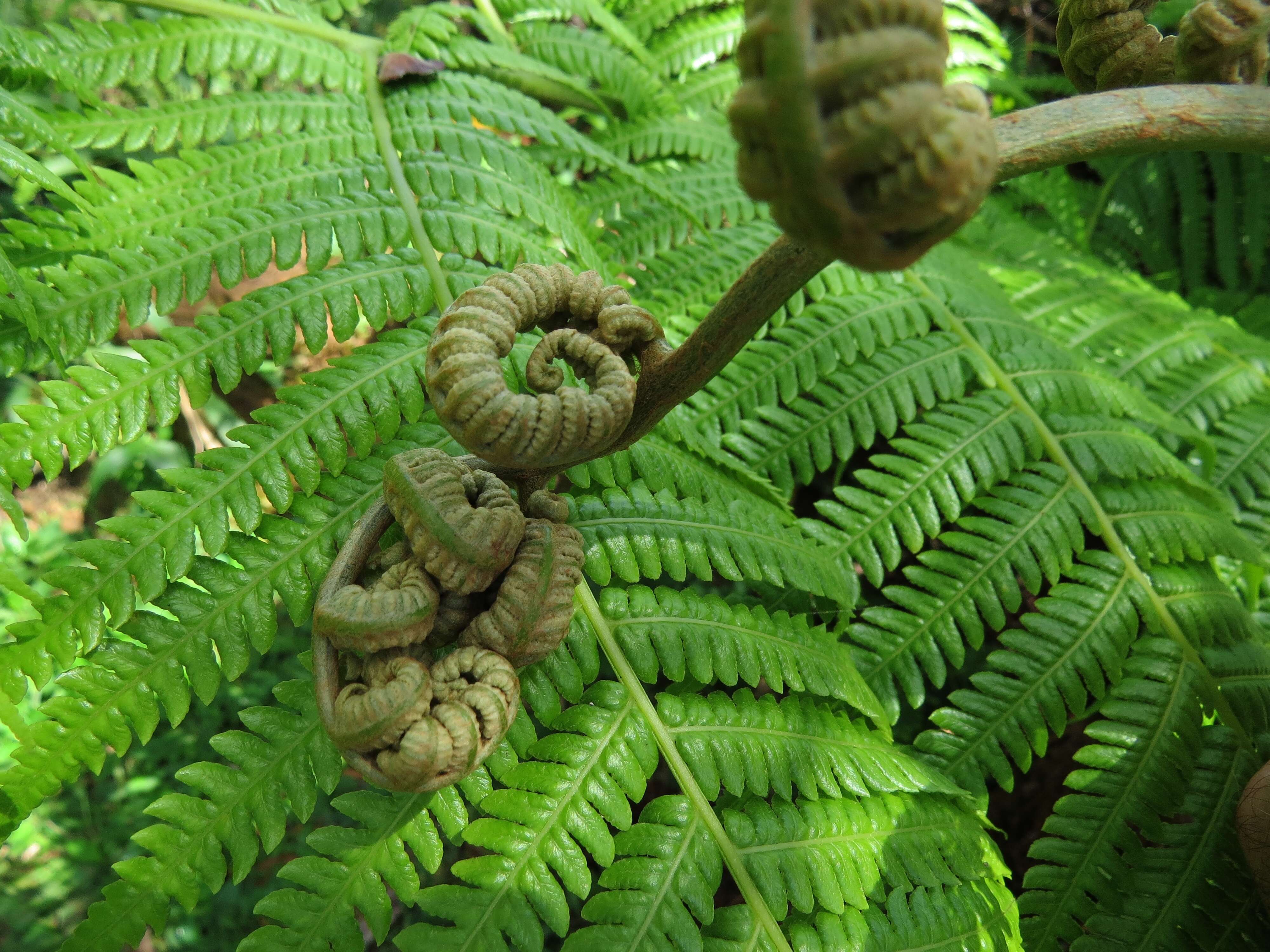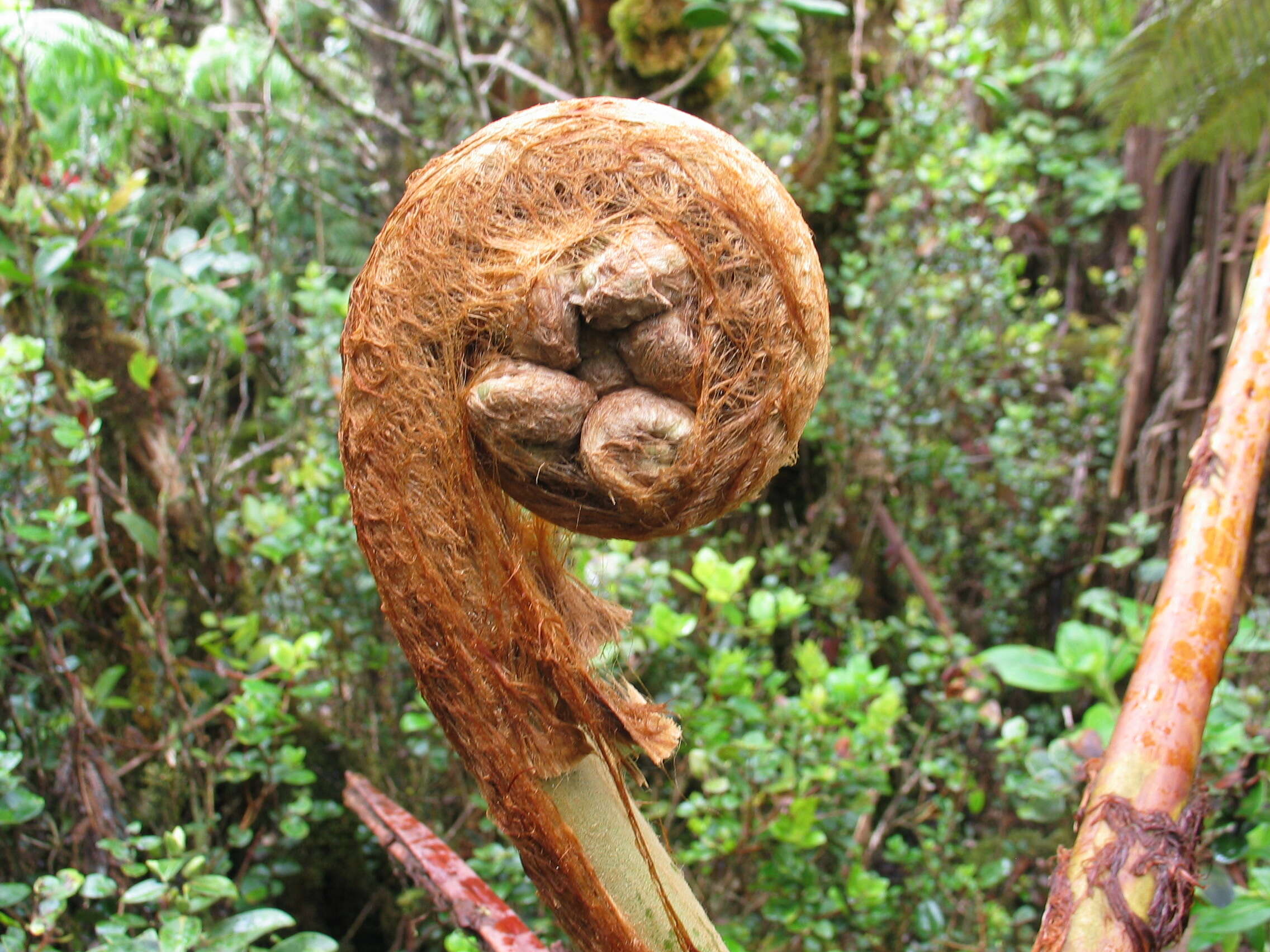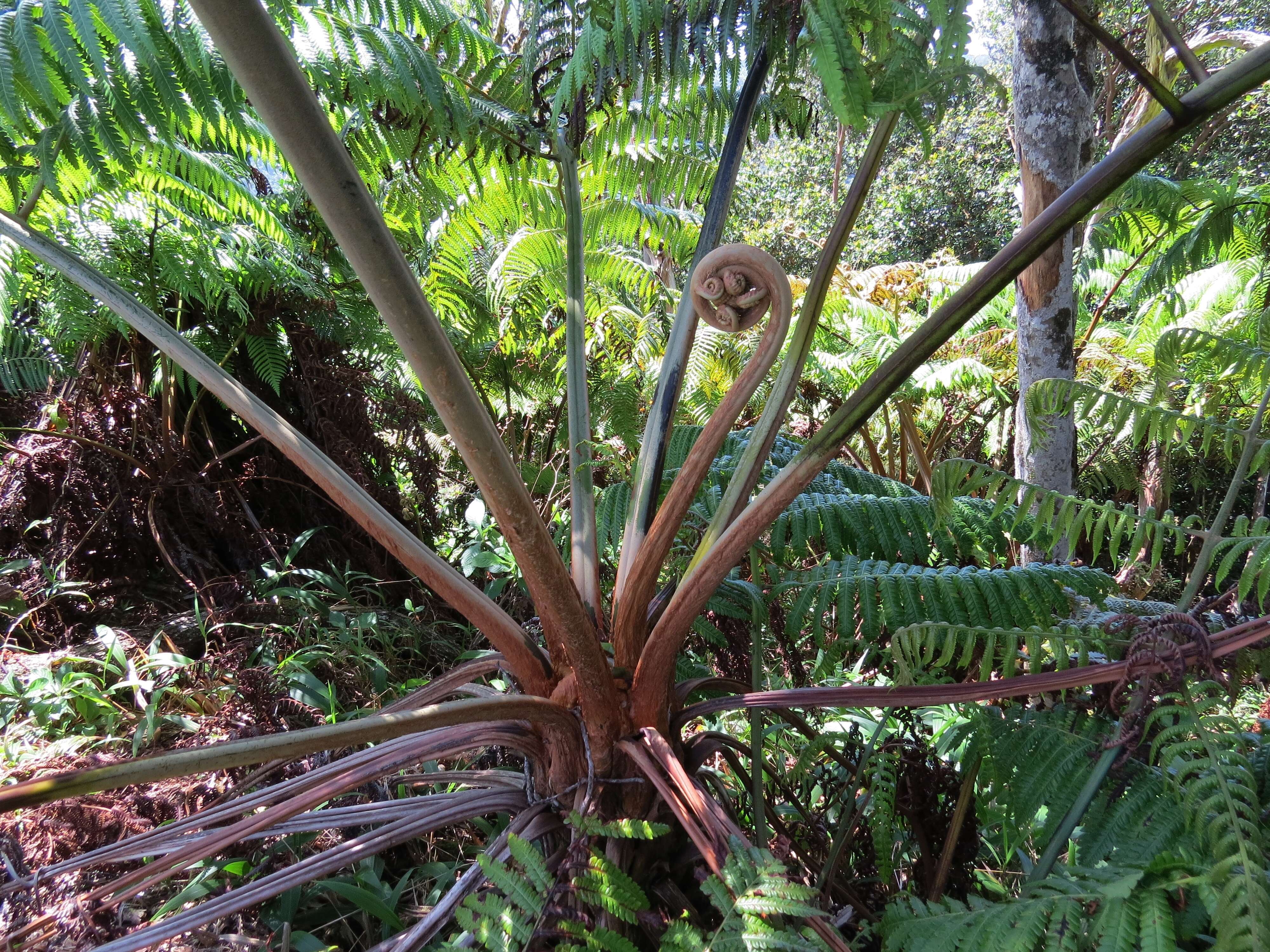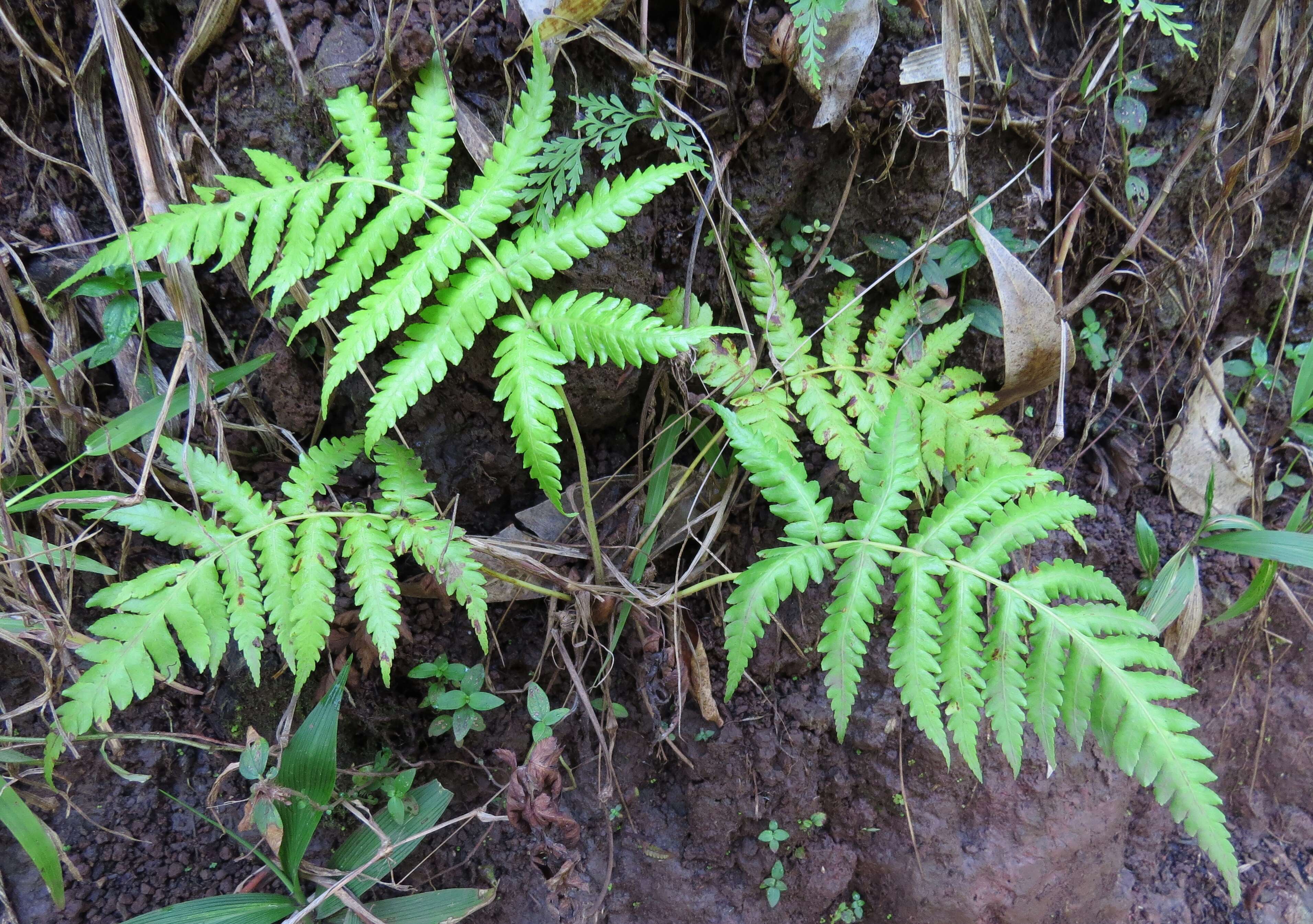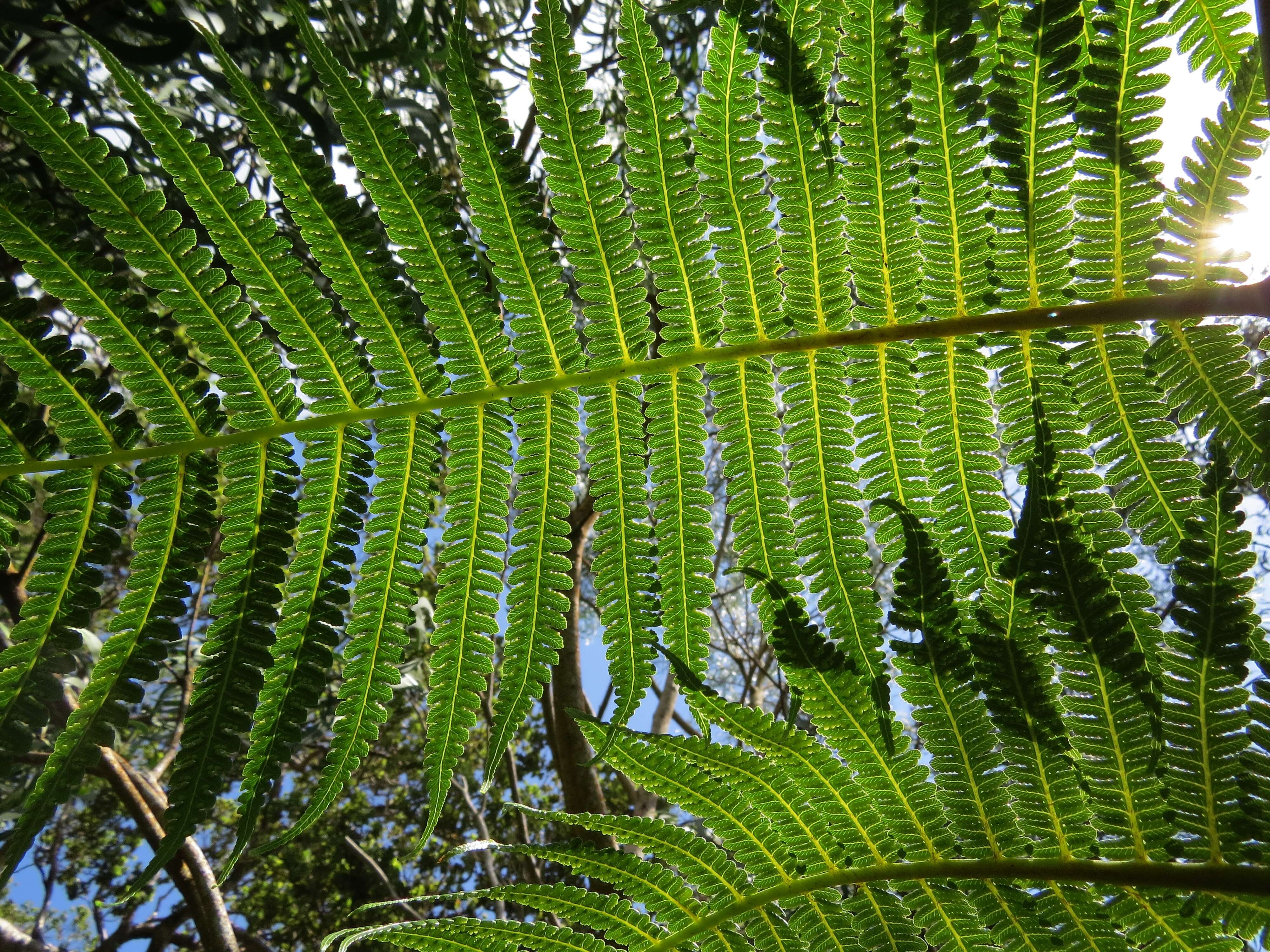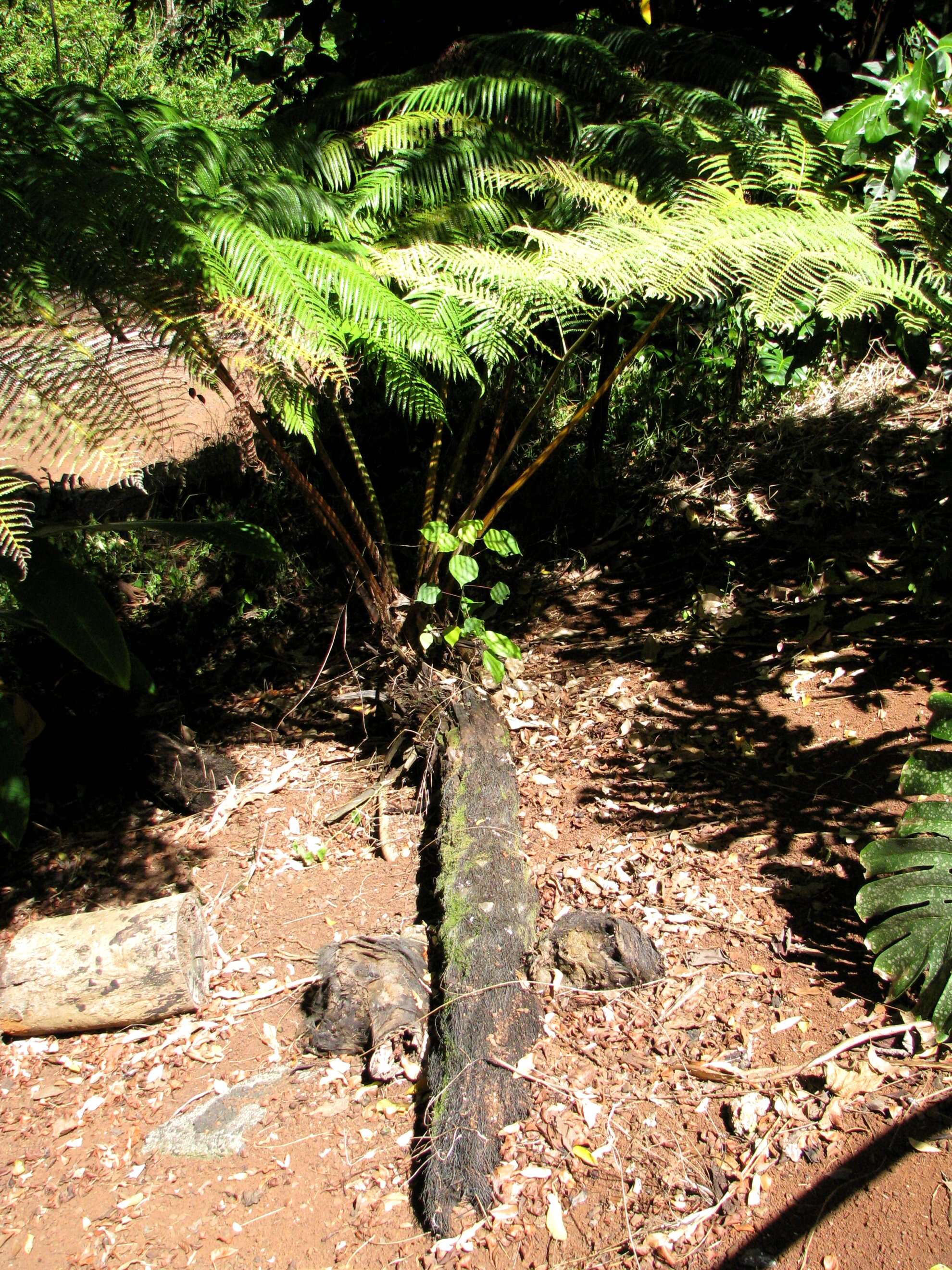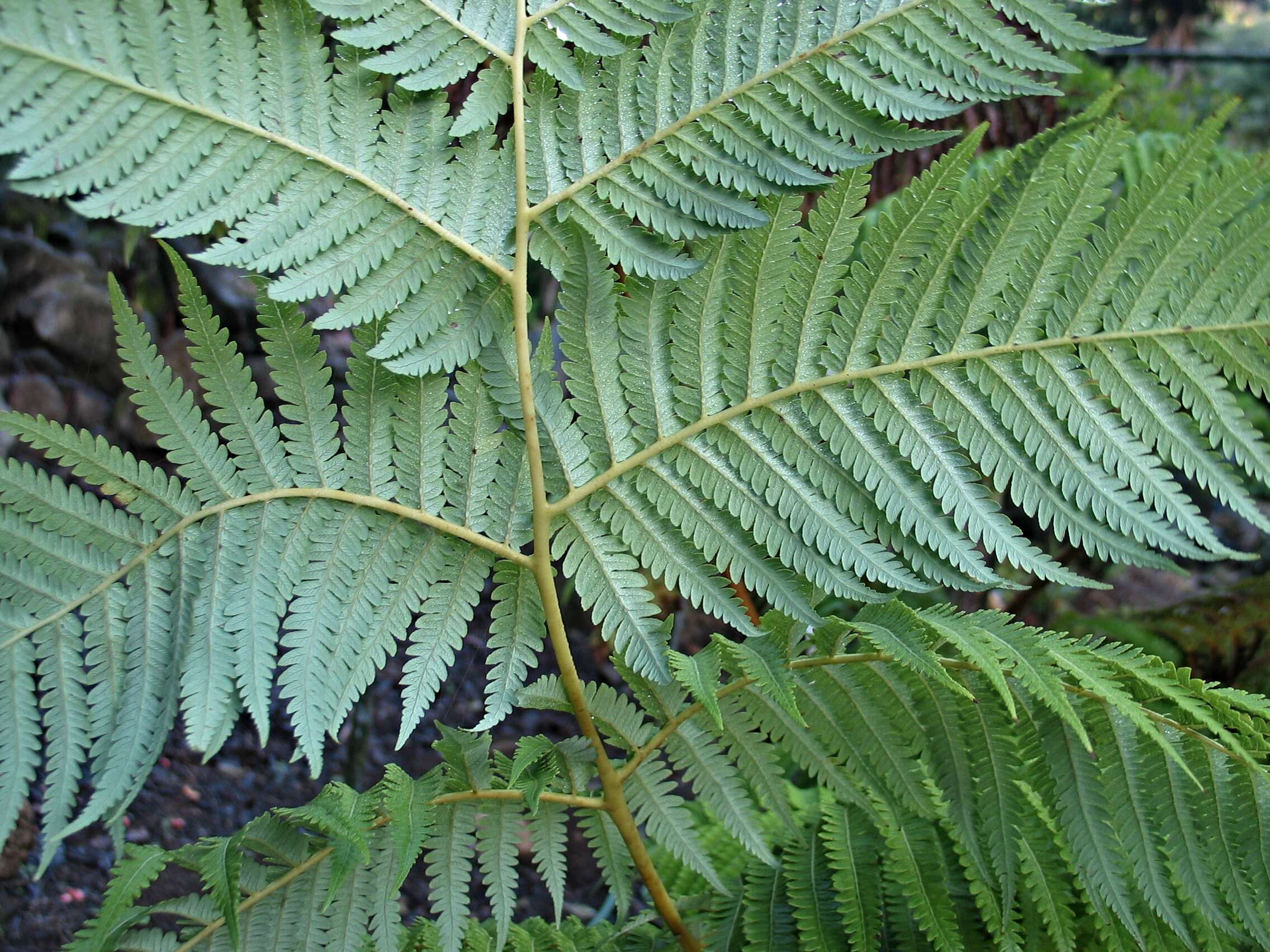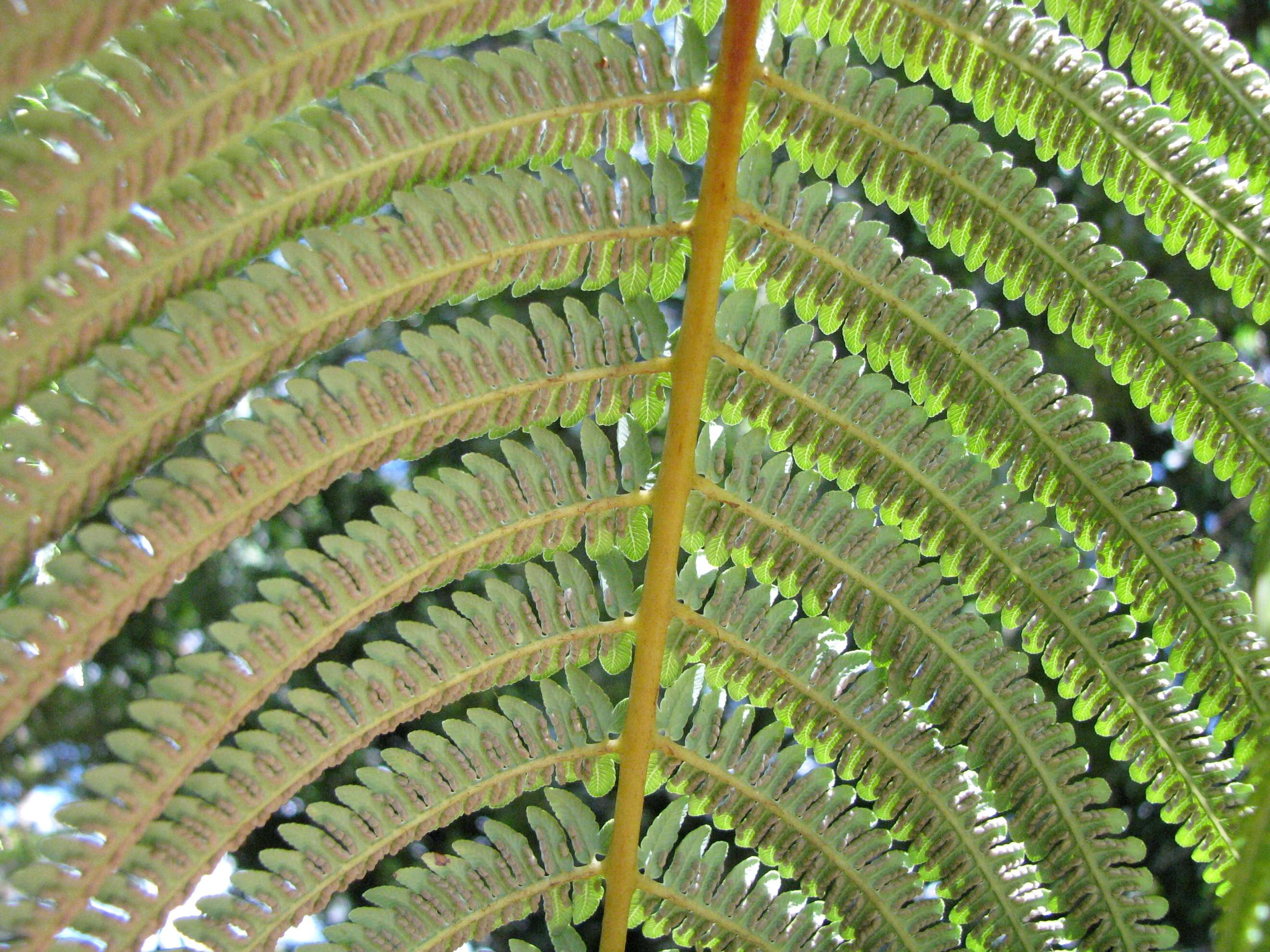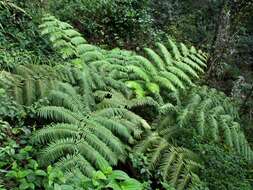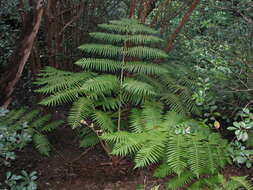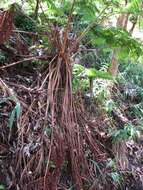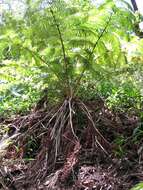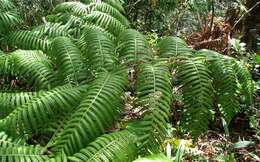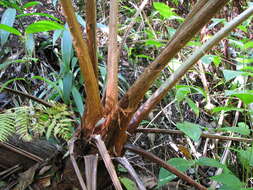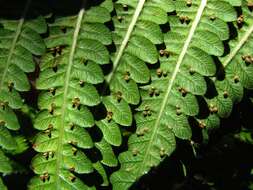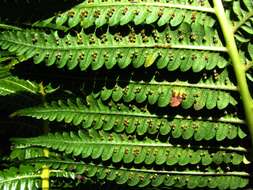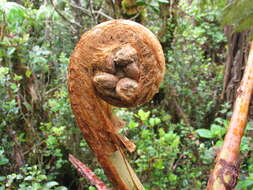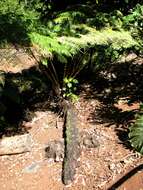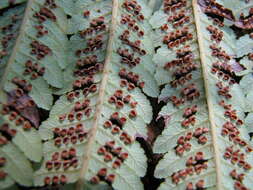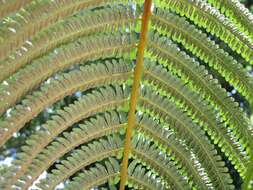Hpuu or Hpuu meuCibotiaceae (Tree fern family)Endemic to the Hawaiian Islands (common on Oahu; uncommon to scattered on Molokai, Lnai, Maui and Hawaii Island)Aiea Loop Trail, Oahuhia (Metrosideros polymorpha) seedlings are often seen growing from the moist debris collected on hpuu. The roots go down to the ground. Thus, some early Hawaiians believed tree ferns were the parents of hia.The pulu, the soft woolly material around the base of the fronds, was used by Hawaiians up to the mid-1800s for dressing wounds, embalming bodies, and for pillow and mattress stuffing. Tall hpuu were cut down to gather the pulu more easily. Since hpuu trunks are basically an entire root structure in themselves, many of the hpuu that were cut down usually grew back with minimal damage to forest populations.Hawaiians, both long ago as well as in recent times, ate the uncoiled fronds (fiddles), which were considered delicious when boiled. Likely the starchy core of this species, as with hpuu pulu and hpuu ii, was used as an important famine food. One trunk may contain 50-70 pounds of almost pure starch and would have been used for human as well as pig consumption. It was prepared by peeling the young fronds or placing the entire trunk with the starchy center in an imu or in steam vents at the volcano.The saying was "He hpuu ka ai he ai make" (If the hpuu is the food, it is the food of death).Etymology The generic name Cibotium is from the Greek kibotion, dimunutive of kibotos, a box or casket, in reference to the indusium, a part of the fern blade that covers the sorus (spores).The specific name, chamissoi, named for Ludolf Karl Adelbert von Chamisso (1781-1838), French-born German explorer, naturalist, author, poet, and plant collector.NPH00010
www.nativeplants.hawaii.edu/plant/view/Cibotium_chamissoi



